Test Bank for Physics with Mastering Physics, 4/E 4th Edition. James S. Walker
$38.00
Walker’s goal is to help students make the connection between a conceptual understanding of physics and the various skills necessary to solve quantitative problems. The pedagogy and approach are based on over 20 years of teaching and reflect the results of physics education research. Already one of the best-selling textbooks in algebra-based physics,The Fourth Edition strengthens both the conceptual foundations and the tools for problem solving to make the book even better suited to today’s students.
ISBN-10: 032161111X • ISBN-13: 9780321611116
- Description
- Reviews (0)
Description
You will receive this product immediate after placing the order
Physics, 4e (Walker/Gatch)
Chapter 4 Two-Dimensional Kinematics
4.1 Conceptual Questions
1) Two objects are thrown vertically upwards simultaneously, one on the surface of Earth and the other on the surface of the Moon. Both have an initial velocity of 20 m/s. Both objects will take the same time to reach the highest point of their trajectory.
Answer: FALSE
Diff: 1 Var: 1 Page Ref: Sec. 4-1
2) The horizontal component of the velocity of a projectile remains constant during the entire trajectory of the projectile.
Answer: TRUE
Diff: 1 Var: 1 Page Ref: Sec. 4-2
3) The vertical component of the acceleration of a projectile remains constant during the entire trajectory of the projectile.
Answer: TRUE
Diff: 1 Var: 1 Page Ref: Sec. 4-2
4) Two similar objects are thrown simultaneously from the top of a building with the same speed. One is thrown vertically downward, and the other at an angle. Both objects reach the ground at the same time.
Answer: FALSE
Diff: 1 Var: 1 Page Ref: Sec. 4-2
5) A ball is thrown at an angle of ? above the horizontal. If there is no acceleration due to gravity the ball will follow a straight-line path.
Answer: TRUE
Diff: 1 Var: 1 Page Ref: Sec. 4-4
6) A projectile is launched from ground level with a certain speed. For any range less than the maximum range there are two possible launch angles that give the same range.
Answer: TRUE
Diff: 2 Var: 1 Page Ref: Sec. 4-5
7) If the acceleration vector of an object is directed parallel to the velocity vector,
A) the object is turning.
B) the object is speeding up.
C) the object is slowing down.
D) the object is not moving.
E) this situation would not be physically possible.
Answer: B
Diff: 1 Var: 1 Page Ref: Sec. 4-1
8) If the acceleration vector of an object is directed anti-parallel to the velocity vector,
A) the object is turning.
B) the object is speeding up.
C) the object is slowing down.
D) the object is not moving.
E) this situation would not be physically possible.
Answer: C
Diff: 1 Var: 1 Page Ref: Sec. 4-1
9) If the acceleration vector of an object is directed perpendicular to the velocity vector,
A) the object is turning.
B) the object is speeding up.
C) the object is slowing down.
D) the object is not moving.
E) this situation would not be physically possible.
Answer: A
Diff: 1 Var: 1 Page Ref: Sec. 4-1
10) For general projectile motion, the horizontal component of a projectile’s velocity
A) is zero.
B) remains a non-zero constant.
C) continuously increases.
D) continuously decreases.
E) any of the above, depending on position.
Answer: B
Diff: 1 Var: 1 Page Ref: Sec. 4-2
11) For general projectile motion, the horizontal component of a projectile’s acceleration
A) is zero.
B) remains a non-zero constant.
C) continuously increases.
D) continuously decreases.
E) any of the above, depending on position.
Answer: A
Diff: 1 Var: 1 Page Ref: Sec. 4-2
12) For general projectile motion, the vertical component of a projectile’s acceleration
A) is zero.
B) remains a non-zero constant.
C) continuously increases.
D) continuously decreases.
E) any of the above, depending on position.
Answer: B
Diff: 1 Var: 1 Page Ref: Sec. 4-2
13) For a projectile launched horizontally, the vertical component of a projectile’s velocity
A) is zero.
B) remains a non-zero constant.
C) continuously increases.
D) continuously decreases.
E) any of the above, depending on position.
Answer: C
Diff: 1 Var: 1 Page Ref: Sec. 4-3
14) For a projectile launched horizontally, the horizontal component of a projectile’s velocity
A) is zero.
B) remains a non-zero constant.
C) continuously increases.
D) continuously decreases.
E) any of the above, depending on position.
Answer: B
Diff: 1 Var: 1 Page Ref: Sec. 4-3
15) A ball rolls off the edge of a table. The horizontal component of the ball’s velocity remains constant during its entire trajectory because
A) the ball is not acted upon by any force.
B) the net force acting on the ball is zero.
C) the ball is not acted upon by a force in the horizontal direction.
D) the ball is not acted upon by a force in the vertical direction.
E) None of the other choices is correct.
Answer: C
Diff: 1 Var: 1 Page Ref: Sec. 4-3
16) A mountain climber encounters a crevasse in an ice field. The opposite side of the crevasse is a height h lower, and is separated horizontally by a distance w. To cross the crevasse, the climber gets a running start and jumps in the horizontal direction. If the height of the crevasse increases but the width remains the same, then,
A) the minimum speed needed to cross the crevasse increases.
B) the minimum speed needed to cross the crevasse decreases.
C) the minimum speed needed to cross the crevasse stays the same
D) the minimum speed needed to cross the crevasse will depend on the mass of the mountain climber.
E) the minimum speed needed to cross the crevasse will depend on the weight of the mountain climber.
Answer: B
Diff: 1 Var: 1 Page Ref: Sec. 4-3
17) James and John dive from an overhang into the lake below. James simply drops straight down from the edge. John takes a running start and jumps with an initial horizontal velocity of 25 m/s. When they reach the lake below,
A) the splashdown speed of James is larger than that of John.
B) the splashdown speed of John is larger than that of James.
C) they will both have the same splashdown speed.
D) the splashdown speed of James will always be 9.8 m/s larger than that of John.
E) the splashdown speed of John will always be 25 m/s larger than that of John.
Answer: B
Diff: 1 Var: 1 Page Ref: Sec. 4-3
18) James and John dive from an overhang into the lake below. James simply drops straight down from the edge. John takes a running start and jumps with an initial horizontal velocity of 25 m/s. Compare the time it takes each to reach the lake below.
A) James reaches the surface of the lake first.
B) John reaches the surface of the lake first.
C) James and John will reach the surface of the lake at the same time.
D) Cannot be determined without knowing the mass of both James and John.
E) Cannot be determined without knowing the weight of both James and John.
Answer: C
Diff: 1 Var: 1 Page Ref: Sec. 4-3
19) A pilot drops a bomb from a plane flying horizontally at a constant speed. Neglecting air resistance, when the bomb hits the ground the horizontal location of the plane will
A) be behind the bomb.
B) be over the bomb.
C) be in front of the bomb.
D) depend of the speed of the plane when the bomb was released.
E) depend of the mass of the bomb when it was released.
Answer: B
Diff: 2 Var: 1 Page Ref: Sec. 4-3
20) A rock is thrown at some angle above the horizontal with a certain velocity. It reaches its highest point and starts falling down. What is the velocity of the rock at the highest point of its trajectory?
A) 0
B) 9.8 m/s
C) It is equal to its initial horizontal velocity.
D) It is equal to its initial vertical velocity.
E) It is equal to its initial velocity.
Answer: C
Diff: 1 Var: 1 Page Ref: Sec. 4-4
21) A student kicks a soccer ball in a high arc toward the opponent’s goal. At the highest point in its trajectory:
A) both velocity and acceleration of the soccer ball are zero.
B) neither the ball’s velocity nor its acceleration is zero.
C) the ball’s acceleration is zero but not its velocity.
D) the ball’s acceleration points upwards.
E) the ball’s velocity points downwards.
Answer: B
Diff: 1 Var: 1 Page Ref: Sec. 4-4
22) When a football in a field goal attempt reaches its maximum height, how does its speed compare to its initial speed?
A) It is zero.
B) It is less than its initial speed.
C) It is equal to its initial speed.
D) It is greater than its initial speed.
E) Cannot be determined without additional information.
Answer: B
Diff: 1 Var: 1 Page Ref: Sec. 4-4
23) A rock is thrown upwards at an angle of 40° with respect to the horizontal. As the rock is rising in its trajectory, the vertical component of its velocity
A) increases.
B) decreases.
C) remains the same.
D) is zero.
E) Cannot be determined without additional information.
Answer: B
Diff: 1 Var: 1 Page Ref: Sec. 4-4
24) A rock is thrown upwards at an angle of 40° with respect to the horizontal. As the rock is rising in its trajectory, the horizontal component of its velocity
A) increases.
B) decreases.
C) remains the same.
D) is zero.
E) Cannot be determined without additional information.
Answer: C
Diff: 1 Var: 1 Page Ref: Sec. 4-4
25) A projectile is launched with an initial velocity of 80 m/s at an angle of 30° above the horizontal. Neglecting air resistance, what is horizontal component of the projectile’s acceleration?
A) 80 m/s2
B) 40 m/s2
C) 9.8 m/s2
D) 0 m/s2
E) 4.9 m/s2
Answer: D
Diff: 1 Var: 1 Page Ref: Sec. 4-4
26) A boy kicks a football with an initial velocity of 20 m/s at an angle of 25° above the horizontal. The magnitude of the acceleration of the ball while it is in flight is
A) 25 m/s2.
B) 20 m/s2.
C) 9.8 m/s2.
D) 8.4 m/s2.
E) 0 m/s2.
Answer: C
Diff: 1 Var: 1 Page Ref: Sec. 4-4
27) An athlete throws a ball with a velocity of 40 m/s at an angle of 20° above the horizontal. Which of the following statements is true in this case?
A) The vertical component of the velocity remains constant.
B) The horizontal component of the velocity changes.
C) The vertical component of the velocity changes sign after the ball attains its maximum height.
D) The horizontal component of the velocity changes sign after the ball attains its maximum height.
E) None of the given choices is correct.
Answer: C
Diff: 1 Var: 1 Page Ref: Sec. 4-4
28) A monkey is sitting at the top of a tree 20 m high from the ground level. A person standing on the ground wants to feed the monkey. He uses a bow and arrow to launch the food to the monkey. If the monkey remains seated at the top of the tree, how should the person aim the arrow containing the food so that the monkey gets the food?
A) He should aim it at the monkey.
B) He should aim it below the monkey.
C) He should aim it above the monkey.
D) None of the other choices is correct.
Answer: C
Diff: 1 Var: 1 Page Ref: Sec. 4-4
29) A monkey is sitting at the top of a tree 20 m high from the ground level. A person standing on the ground wants to feed the monkey. He uses a bow and arrow to launch the food to the monkey. If the person knows that the monkey is going to drop from the tree at the same instant that the person launches the food, how should the person aim the arrow containing the food?
A) He should aim it at the monkey.
B) He should aim it below the monkey.
C) He should aim it above the monkey.
D) None of the other choices is correct.
Answer: A
Diff: 1 Var: 1 Page Ref: Sec. 4-4
30) A bullet is fired from ground level with a speed of 150 m/s at an angle 30.0° above the horizontal at a location where g = 10.0 m/s2. What is the horizontal component of its velocity when it is at the highest point of its trajectory?
A) 0 m/s
B) 10 m/s
C) 75.0 m/s
D) 130 m/s
E) 150 m/s
Answer: D
Diff: 2 Var: 1 Page Ref: Sec. 4-4
31) A bullet is fired from ground level with a speed of 150 m/s at an angle 30.0° above the horizontal at a location where g = 10.0 m/s2. What is the vertical component of its velocity when it is at the highest point of its trajectory?
A) 0 m/s
B) 10 m/s
C) 75.0 m/s
D) 130 m/s
E) 150 m/s
Answer: A
Diff: 2 Var: 1 Page Ref: Sec. 4-4
32) For which value of ? is the range of a projectile fired from ground level a maximum?
A) 30° above the horizontal
B) 45° above the horizontal
C) 55° above the horizontal
D) 60° above the horizontal
E) 90° above the horizontal
Answer: B
Diff: 1 Var: 1 Page Ref: Sec. 4-5
33) For which value of ? is the height of a projectile fired from ground level a maximum?
A) 30° above the horizontal
B) 45° above the horizontal
C) 55° above the horizontal
D) 60° above the horizontal
E) 90° above the horizontal
Answer: E
Diff: 1 Var: 1 Page Ref: Sec. 4-5
34) If the initial speed of a projectile is doubled.
A) Its range will be increased by 1.41.
B) Its range will double.
C) Its range will be decreased by a factor of two.
D) Its range will quadruple.
E) Its range will decrease by a factor of four.
Answer: D
Diff: 1 Var: 1 Page Ref: Sec. 4-5
35) A projectile is launched with initial velocity v0 at an angle of 30° above the horizontal. If a second projectile is launched with the same initial velocity but at angle of 60° above the horizontal.
A) The range of the second projectile will be twice that of the first.
B) The range of the second projectile will be 1.41 that of the first.
C) The range of the second projectile will be one-half that of the first.
D) The ranges of the two projectiles will be identical.
E) It is impossible to compare the ranges of the two projectiles.
Answer: D
Diff: 1 Var: 1 Page Ref: Sec. 4-5
36) A ball is thrown with a velocity of 40 m/s at an angle of 30° above the horizontal and attains a certain range R. At what other angle will this ball attain the same range keeping its initial velocity the same?
A) 15°
B) 90°
C) 120°
D) 60°
E) All other angles will give different ranges.
Answer: D
Diff: 1 Var: 1 Page Ref: Sec. 4-5
37) Marcia uses a bow to shoot an arrow with initial velocity of magnitude v0 and at an angle ? above the horizontal. When the arrow returns to the same height from which it started,
A) the speed of the arrow is twice v0.
B) the speed of the arrow is 9.8 times larger than v0.
C) the speed of the arrow is again v0.
D) the speed of the arrow is v0.
E) the speed of the arrow is v0/ .
Answer: C
Diff: 1 Var: 1 Page Ref: Sec. 4-5
38) Mary and Debra stand on a snow-covered roof. They both throw snowballs with the same initial speed, but in different directions. Mary throws her snowball downward, at 30° below the horizontal; Debra throws her snowball upward, at 30°. When the snowballs reach the ground below,
A) Debra’s snowball will have a higher speed than Mary’s.
B) Mary’s snowball will have a higher speed than Debra’s.
C) Both snowballs will hit the ground with the same speed.
D) Debra’s snowball never hits the ground since it is thrown upwards.
E) Mary’s snowball never hits the ground since it is thrown downwards.
Answer: C
Diff: 1 Var: 1 Page Ref: Sec. 4-5
39) Mary and Debra stand on a snow-covered roof. They both throw snowballs with the same initial speed, but in different directions. Mary throws her snowball downward, at 30° below the horizontal; Debra throws her snowball upward, at 30°. When the snowballs reach the ground below,
A) Debra’s snowball will stay in the air longer than Mary’s.
B) Mary’s snowball will stay in the air longer than Debra’s.
C) Both snowballs will take the same amount of time to hit the ground.
D) Debra’s snowball never hits the ground since it is thrown upwards.
E) Mary’s snowball never hits the ground since it is thrown downwards.
Answer: A
Diff: 1 Var: 1 Page Ref: Sec. 4-5
40) A rock is thrown from ground level at some angle above the horizontal with a certain velocity. It reaches its highest point and starts falling down. What is the magnitude of the velocity of the rock right before it hits the ground?
A) It is equal to its initial vertical velocity.
B) It is equal to its initial horizontal velocity.
C) It is equal to the magnitude of its initial velocity.
D) 0
E) Cannot be determined without additional information.
Answer: C
Diff: 2 Var: 1 Page Ref: Sec. 4-5
Be the first to review “Test Bank for Physics with Mastering Physics, 4/E 4th Edition. James S. Walker”
You must be logged in to post a review.



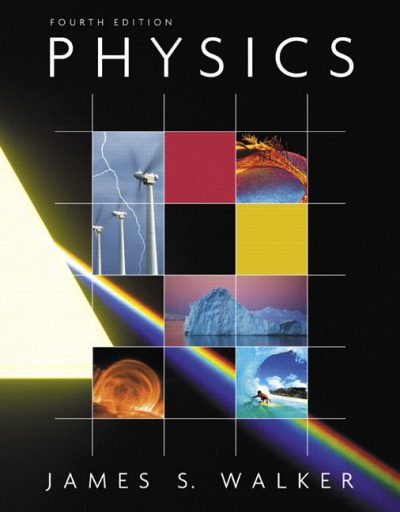
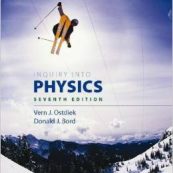

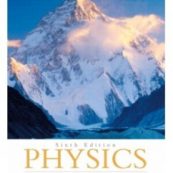

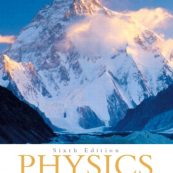
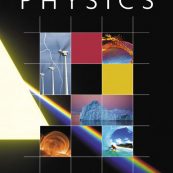
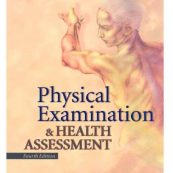


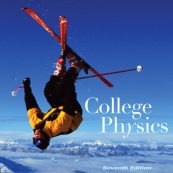
Reviews
There are no reviews yet.